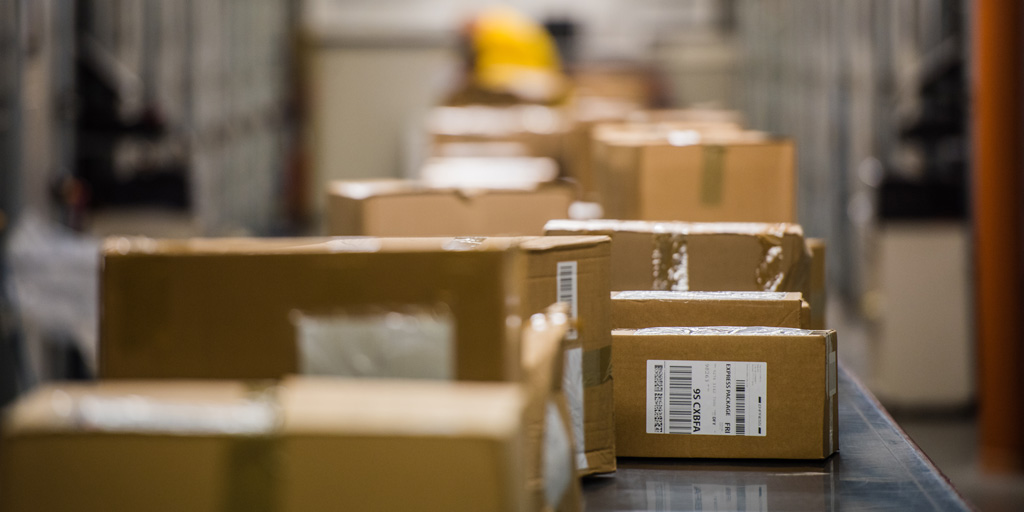When your business starts dealing with a greater volume of sales, your order fulfilment speed becomes a key success factor. As your volumes increase, marrying up orders to carriers can be a problem. In some cases there can be a whole department of people picking orders by hand from the warehouse, and using staplers to attach the parcel labels to the order sheets. Sound familiar?
If you’re using multiple carriers for order fulfilment, then the process of managing labels in different portals can be time consuming and error prone. This can be very troublesome for a business and can increase your non-fulfilment rate, with mixed orders being especially problematic.
We recently did a deep dive into how shipping labels work, and today we’re going to take a closer look at how automation can play a key role in streamlining your labelling process.
Common labelling challenges
Manually booking labels can throw up many challenges for online retailers, especially when they expand into new markets. Before you know it, the task of labelling becomes something that not only requires a lot of resources, but can also directly impact your delivery timeline. And since 42% of UK consumers would abandon their shopping cart if delivery is too slow, hindering productivity with manual processes can really cost your business.
Saving time and money
Booking labels could easily be someone’s full-time job at a mid-sized brand. It means manually inputting information into multiple carrier systems and keeping orders moving through the pipeline. But it’s rarely someone’s full-time gig, so booking labels often pulls an otherwise busy member of staff away from other duties.
Just as time is money, mistakes are also costly. The rule is that when shipping label addresses are inaccurate or incomplete, 41% of deliveries are delayed, and 39% fail entirely. This costs a business in both customer loyalty as well as cold hard cash. Human error is inevitable, especially when you are dealing with hundreds of orders at any given time.
Growing pains
Expanding into new markets is something that typically isn’t possible without having a network of delivery partners. This means working with multiple carriers to offer local deliveries in the countries that you sell in. It also means adding another layer of complexity to the process of creating labels, as customs documents if and when required can add three extra pages to the printer queue. This bottleneck can slow down order fulfilment timelines significantly.
Having to manually input shipping information into various templates that all have different information requirements, can leave brands wondering if the challenges of cross-border commerce can easily be solved.
But enough about problems, let’s talk solutions. Here’s what happens when you use a delivery management platform to automate the shipping label booking process.
Improve order fulfilment with bulk printing
Bulk printing enables you to print shipping labels in batches of 10/25/50/100 orders at a time. If you want to deselect any items that are on the list of orders that are ready to print, this is possible, so there’s no worry that labels will be booked and printed for orders that don’t require them at that point in time.
What’s more is that if there are any shipments that contain errors, or that have been cancelled, you’ll receive a notification and won’t be able to print the batch of labels until these errors have been rectified. This greatly decreases the chances of failed or delayed deliveries due to incorrect data.
Integrated customs documents
By using a delivery management platform, it’s possible to combine shipping and customs information on a single shipping label. So rather than having to print multiple customs documents and adding this extra documentation to your parcels, the system will automatically include it on the shipping label. This reduces customs complexity, and streamlines your cross-border delivery workflows.
Related: Find out how Scurri helped fashion brand Everything5pounds half their delivery costs, and expand internationally. Download the case study here.
A single label for multiple carriers
A disjointed labelling process can be a drain on your resources, it can hinder your warehouse operations, impacting your shipment preparation times, and in turn your order fulfilment speed.
A delivery management platform allows a retailer to connect to multiple carriers through a single API. Instead of having to manage multiple carrier integrations and labels in different portals, they are all managed easily in one place.
Using a rules-based engine you set parameters for all carrier labels, avoiding costly errors and unforeseen delays. So even if you have multiple carriers, accurate shipping labels are automatically generated for each of them, every time.
If you think that you might be spending too much time booking shipping labels, slowing your order fulfilment speed, now is the time to take action.
Talk to the Scurri team about how our delivery management platform can take the hassle out of deliveries and help your business grow.
